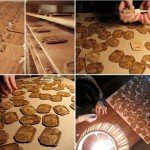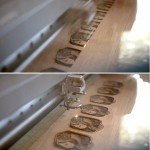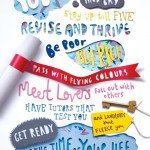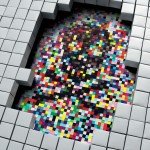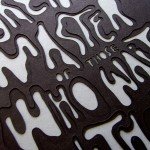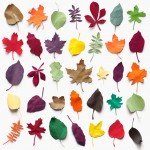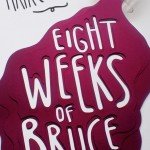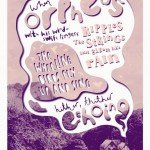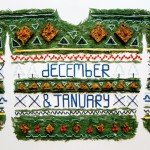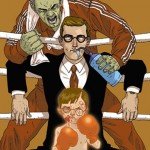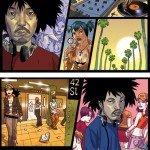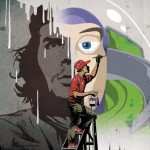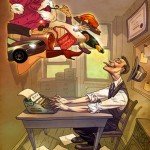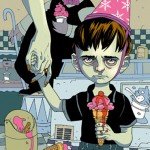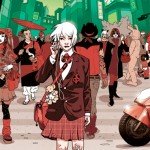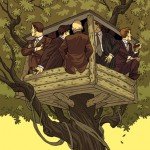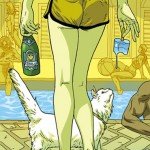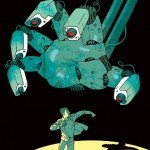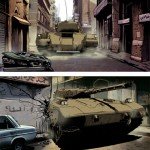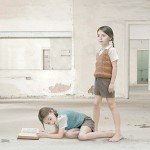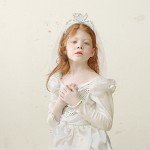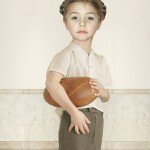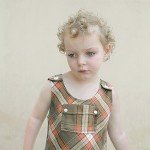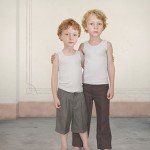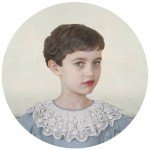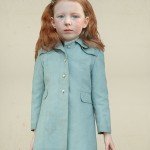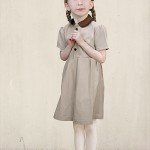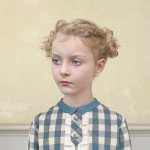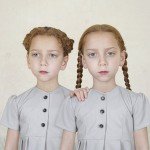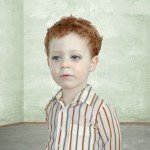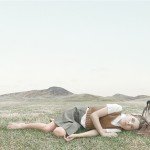I have always loved Audrey Kawasaki’s illustrations and these brooches engraved with her signature illustrations are the latest to come out of her workshop. You can buy them here.
I got very excited when I came across Owen’s work. I truly love his handcrafted use of alternative materials in order to create something beautiful and communicative. The details in his cut out crunched up paper leaves and in his hand stitched poster is madness, patient-beautiful madness. Working from London, Owen’s as created illustrations for The TATE, The New York Times, Douglas & Gordon, Money Magazine and The Guardian. I love that handmade design/illustration still has a place in this world where artworks are created by means of a mouse click. I hope you enjoy Owen’s work as much as I do.
- Owen Gildersleeve-Quero Sentir a Vida
- Owen Gildersleeve-You’ll Laugh and Cry
- Owen Gildersleeve-Video Game Piracy
- Owen Gildersleeve-Video Game Piracy-close up
- Owen Gildersleeve-Motive Sounds
- Owen Gildersleeve-Thou Shalt Do the Right Thing-close up
- Owen Gildersleeve-Thou Shalt Do the Right Thing 1
- Owen Gildersleeve-The Great Old Ones
- Owen Gildersleeve-The Clean-Technology Race
- Owen Gildersleeve-Abscission
- Owen Gildersleeve-November
- Owen Gildersleeve-Eight Weeks of Bruce
- Owen Gildersleeve-Cutting Taxes
- Owen Gildersleeve-Alone in the Empty Cottage
- Owen Gildersleeve-Back too School
- Owen Gildersleeve-Winter Sweater
Born and raised in Seattle/Washington, Stacey tells stories of an early culture, where she explores the relationship between nature and animals. Her brightly coloured and ethnically textured characters give the viewer a sense of nostalgia, seem slightly frightening hidden behind their masks and at the same time appear familiar and inviting. Stacey draws inspiration from cultures all around the world. I love how she portrays her findings in such a fresh and beautiful manner. Have a look at her blog for more folk art.
- Stacey Rozich-Berlin Rabbit
- Stacey Rozich-Dolce Vita 2
- Stacey Rozich-Dolce Vita 3
- Stacey Rozich-Dolce Vita 5
- Stacey Rozich-Dolce Vita 6
- Stacey Rozich-New York Before Ritual
- Stacey Rozich-New York Gem Mine
- Stacey Rozich-New York Snake Dance
- Stacey Rozich-Punc Trio
- Stacey Rozich-Punc Wildboar
- Stacey Rozich-Small Series 3
- Stacey Rozich-Small Series 5
While I was collecting examples of Asaf’s work I started to notice that it looked very similar to Tomer’s work. I have subsequently learnt that they are in fact twin brothers. Asaf Hanuka and Tomer Hanuka. I posted Tomer Hanuka’s work fairly recently and I guess this is now in part acting as a follow up post. Asafs work is equally good and one or two illustrations can be compared to Istvan Banyai in style.
Asaf also does a weekly comic which is a documentation of one family’s search of a home. Definitely worth checking out.
His subject matter is thought provoking and unique. I hope you enjoy his illustrations:
- Asaf Hanuka – Coaching
- Asaf Hanuka – DJ Dask
- Asaf Hanuka – Mural
- Asaf Hanuka – Swag
- Asaf Hanuka – Ice
- Asaf Hanuka – Albert
- Asaf Hanuka – Uncle
- Asaf Hanuka – Red Light
- Asaf Hanuka – Other
- Asaf Hanuka – Green Card
- Asaf Hanuka – Tree
- Asaf Hanuka – Cat
- Asaf Hanuka – Camera
- Asaf Hanuka – Futur Kid
- Asaf Hanuka – Tank
- Asaf Hanuka – Srulik
Quote from the artist: “I began to experiment with fabric and embroidery, and my technique evolves from the figurative pictorial concept to the sewn finish, drawing on the topics full of irony, tortuous relationships, crime and scornful feminine revenge. Since then, my artwork, as well as my graphic design illustrations have been based on this stylistic pattern.” Paula’s Website
I really love the tactile feeling of these sewn illustrations. Note that there are the full pieces and to each piece there is one relating zoomed image which you need to have a look at if you want to get a feeling for her work.
- Paula Sanz Caballero – Arco
- Paula Sanz Caballero – Arco Zoom
- Paula Sanz Caballero – Arco
- Paula Sanz Caballero – Arco Zoom
- Paula Sanz Caballero – Art Chicago
- Paula Sanz Caballero – Art Chicago Zoom
- Paula Sanz Caballero – Vanity
- Paula Sanz Caballero – Vanity Zoom
HYPNOTIST Stare into the eyes of a Loretta Lux portrait long enough, and you’re bound to feel both completely mesmerized and completely spooked. Lux’s starkly pale, prepubescent subjects haunt the viewer from inside the image as if they were hiding some terrible secret. Remarkably captivating yet exceedingly eerie–the formula has turned the German photographer into an art-world phenom, earned her the coveted Infinity Award for Art from the International Center of Photography and made her a millionaire.
A former painter, Lux, 38, brings her images to life with the attention to form, shape and color that she learned at the easel. The artistry begins at the photo shoot, but her signature style–the brushstrokes of her new medium–comes later, at the computer. First she strips out the background and replaces it with a quiet setting–a grassy field, an abandoned building–from her personal stash of paintings and pictures. Then she erases any object that crowds the picture, like a tree or toy, so the child appears to be part of a dream. “I don’t care about traditional photography,” Lux says. “I want more control.”
Lux started taking children’s portraits nearly eight years ago, when she shot a couple of rolls of film of her nephew. It took her only one day with that little boy to realize what comes across so vividly in her work: children are the perfect subjects to photograph. “They have no reservations,” she says. “They are the most honest models.”
But exactly what her portraits are supposed to mean remains a mystery, and Lux doesn’t offer many clues, saying only that the images, which can take up to a year to complete, are less about the subjects than they are a metaphor for the idea of childhood. “I want people to decide what to see,” she says. Whatever they do decide, they’re not likely to forget it.
by Carolyn Sayre, Time Magazine
- Loretta Lux-Book
- Loretta Lux-Bride
- Loretta Lux-Fish
- Loretta Lux-Girl with a Loaf of Bread
- Loretta Lux-Girl
- Loretta Lux-Hidden Rooms
- Loretta Lux-Hugo and Dylan
- Loretta Lux-Isabel 2
- Loretta Lux-Marianne
- Loretta Lux-Martha
- Loretta Lux-Portrait of Antonia
- Loretta Lux-Sasha and Ruby
- Loretta Lux-Stud 3
- Loretta Lux-The Drummer
- Loretta Lux-The Waiting Girl
- Loretta Lux-Wan


